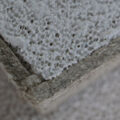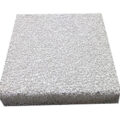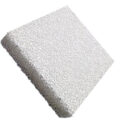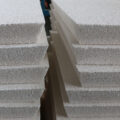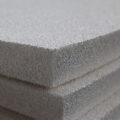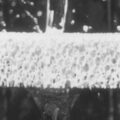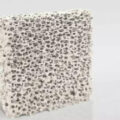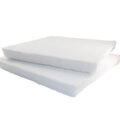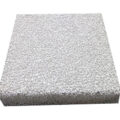
As a new type of porous material, foam ceramics have properties such as strength and hardness, good plastic toughness, corrosion resistance and high-temperature resistance. Ceramic foam filter is made of porous foam ceramics material, it has good mechanical properties and applications, and has achieved good economic benefits in molten metal filtration.
Porous foam ceramics have a ceramic skeleton structure and a three-dimensional continuous network of continuous through holes, shaped like “foam plastic” or “porcelain fused sponge”. As a new type of inorganic non-metallic material, ceramic foam has the good properties of general ceramic materials such as high hardness, high-temperature resistance, and corrosion resistance. They also have good plastic toughness, high porosity, thermal stability, thermal shock resistance, and good filter adsorption. They are widely used in metal smelting, chemical industry, aerospace, automotive, construction, medical and other fields.
According to whether the pores have solid walls, porous foam ceramics are generally divided into two types: open-cell ceramics and closed-cell ceramics. At present, the main research on foam ceramics is the open type at home and abroad.

Organic Foam Impregnation Method
The organic foam impregnation method is the most widely used method in the industry. This method utilizes the unique three-dimensional network skeleton structure of foam ceramics to coat ceramic slurry organic foam network on polyurethane, and then dry and burn the organic foam at room temperature to degrade it to obtain foam ceramics. This method can produce high-performance foam ceramics, but the disadvantage is that it cannot produce closed-cell products with small diameters.
Foaming Method
The basic principle of the foaming method is to use the chemical reaction of the foaming agent to generate a certain amount of volatile gas to foam the slurry, and then obtain foam ceramic sintering by drying. The method is easy to control the shape and density of the product, and can be used to prepare closed-cell ceramics with small pore sizes. The disadvantage is that the process conditions are difficult to control and the raw material requirements are relatively high. Different foaming agents were used to prepare high-porosity alumina foam ceramics.
Freeze Drying Method
The freeze-drying method is an environment-friendly method for preparing foam ceramics. This method directly freezes the ceramic slurry, then the slurry is dried, vacuumed and heated to sublimate the ceramic slurry. Ice leaves holes in the body. Finally, the required ceramic foam is obtained by calcination. This method can produce foam ceramic products with high porosity and complex pore structure.


